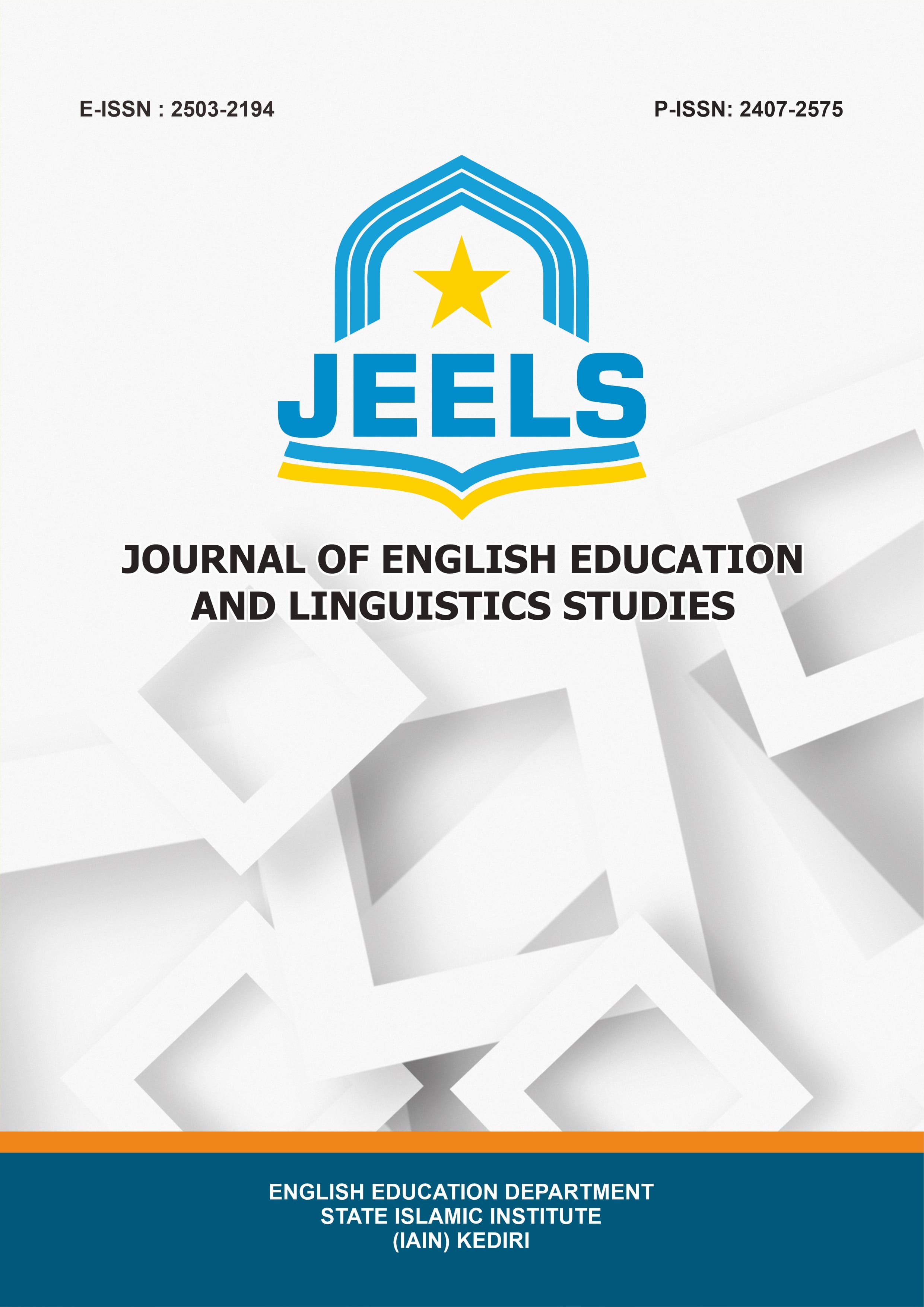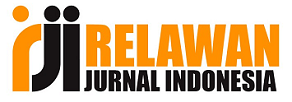Utilizing TPACK Framework in English Language Instruction for High School Students
DOI:
https://doi.org/10.30762/jeels.v11i2.3638Keywords:
English Class; High School; Language Instruction; TPACK; Technology;Abstract
This century's learning advancement relies on different information technology mediums. Thus, educators must improve their ICT skills to improve learning and academic performance. There are two main goals of this study: 1) to find out how TPACK is used to teach and learn English in high school; and 2) to find out what problems English teachers run into when they try to use TPACK. The type of study being done is qualitative. Interviews, documentation, and observation were some of the methods used to gather information for this study. This study looks at 34 kids from XII IPA and one English teacher. English teachers' TPACK knowledge comes from how well technology fits with their teaching methods and English subject knowledge. Technology lets the teacher apply several instructional strategies for several learning environments. According to the Merdeka Curriculum, technology allows SMA 13 Makassar students to learn at their own pace and according to their choices. The English teacher utilized Quizizz or Google Classroom to handle assignments and provide timely feedback. Network service variability affects student engagement and learning equity. SMA 13 Makassar students may need help with coursework, internet forums, and extracurricular resources. While TPACK-based teaching depends on online resources, unreliable network connectivity limits availability. English teachers needing digital libraries, web-based platforms, or multimedia materials need consistent internet access. Unreliable access to these tools can interfere with courses requiring live quizzes, direct assessments, or online group projects to help students grasp complex English literature.
Downloads
References
Atherton, P. (2018). 50 ways to use technology enhanced learning in the classroom: Practical strategies for teaching. https://doi.org/10.4135/9781529793550
Cahyati, S. S., Rahmijati, C., & Supartini, N. (2024). A narrative investigation on TPACK English teachers’ proficiencies. English Review: Journal of English Education, 12(1), 283–292. https://doi.org/10.25134/erjee.v12i1.9302
Carstens, K. J., Mallon, J. M., Bataineh, M., & Al-Bataineh, A. (2021). Effects of technology on student learning. Turkish Online Journal of Educational Technology-TOJET, 20(1), 105–113.
Chuang, H.-H., & Ho, C. (2011). An investigation of early childhood teachers’ technological pedagogical content knowledge TPACK in Taiwan. Ahi Evran Üniversitesi Kırşehir Eğitim Fakültesi Dergisi, 12(2), 99–117.
Churchill, N. (2020). Development of students’ digital literacy skills through digital storytelling with mobile devices. Educational Media International, 57(3), 271–284. https://doi.org/10.1080/09523987.2020.1833680
Dalal, M., Archambault, L., & Shelton, C. (2017). Professional development for international teachers: Examining TPACK and technology integration decision making. Journal of Research on Technology in Education, 49(3–4), 117–133. https://doi.org/10.1080/15391523.2017.1314780
Fishman, B., Dede, C., & Means, B. (2016). Teaching and technology: New tools for new times. Handbook of Research on Teaching, 5, 1269–1334. https://doi.org/10.3102/978-0-935302-48-6_21
Grant, P., & Basye, D. (2014). Personalized learning: A guide for engaging students with technology. International Society for Technology in Education.
Habibi, A., Yusop, F. D., & Razak, R. A. (2020). The role of TPACK in affecting pre-service language teachers’ ICT integration during teaching practices: Indonesian context. Education and Information Technologies, 25(3), 1929–1949. https://doi.org/10.1007/s10639-019-10040-2
Halim, A., Iskandar, Ansari, A., & Halim, N. M. (2024). A study on how the Merdeka curriculum promotes multilingualism in Indonesian ELT classrooms. XLinguae, 17(2), 107–121. https://doi.org/10.18355/XL.2024.17.02.07
Kale, U., Roy, A., & Yuan, J. (2020). To design or to integrate? Instructional design versus technology integration in developing learning interventions. Educational Technology Research and Development, 68, 2473–2504. https://doi.org/10.1007/s11423-020-09771-8
Keane, T. (2020). Robotics in education. In Encyclopedia of Education and Information Technologies (pp. 1437–1444). Springer. https://doi.org/10.1007/978-3-030-10576-1_169
Kennewell, S. (2020). Rationales for information technology in schools, historical perspective. In Encyclopedia of Education and Information Technologies (pp. 1421–1427). Springer. https://doi.org/10.1007/978-3-030-10576-1_164
Koehler, M. J., & Mishra, P. (2016). Handbook of technological pedagogical content knowledge (tpack) for educators. Routledge.
Koehler, M. J., Mishra, P., & Cain, W. (2013). What is technological pedagogical content knowledge (TPACK)? Journal of Education, 193(3), 13–19. https://doi.org/10.1177/002205741319300303
Koehler, M., & Mishra, P. (2009). What is technological pedagogical content knowledge (TPACK)? Contemporary Issues in Technology and Teacher Education, 9(1), 60–70.
Lawless, K. A., & Pellegrino, J. W. (2007). Professional development in integrating technology into teaching and learning: Knowns, unknowns, and ways to pursue better questions and answers. Review of Educational Research, 77(4), 575–614. https://doi.org/10.3102/0034654307309921
Lestari, S. (2020). Needs analysis to design a set of English teaching materials for non-English subject teachers. Edulink: Education and Linguistics Knowledge Journal, 2(1), 67. https://doi.org/10.32503/edulink.v2i1.996
Mairisiska, T., Sutrisno, S., & Asrial, A. (2014). Pengembangan perangkat pembelajaran berbasis TPACK pada materi sifat koligatif larutan untuk meningkatkan keterampilan berpikir kritis siswa. Edu-Sains: Jurnal Pendidikan Matematika Dan Ilmu Pengetahuan Alam, 3(1). https://doi.org/10.22437/jmpmipa.v3i1.1764
Mårell-Olsson, E. (2021). Using gamification as an online teaching strategy to develop students’ 21st century skills. IxD&A: Interaction Design and Architecture (s), 47, 69–93. https://doi.org/10.55612/s-5002-047-004
McDougall, T., & Phillips, M. (2024). Contextual considerations in TPACK: Collaborative processes in initial teacher education. Computers and Education Open, 100207. https://doi.org/10.1016/j.caeo.2024.100207
McLoughlin, C., & Lee, M. J. W. (2008). The three p’s of pedagogy for the networked society: Personalization, participation, and productivity. International Journal of Teaching and Learning in Higher Education, 20(1), 10–27.
Mishra, P., & Koehler, M. J. (2006). Technological pedagogical content knowledge: A framework for teacher knowledge. Teachers College Record, 108(6), 1017–1054. https://doi.org/10.1177/016146810610800610
Niess, M. L. (2018). Introduction to teachers’ knowledge-of-practice for teaching with digital technologies: A technological pedagogical content knowledge (TPACK) framework. In Teacher training and professional development: Concepts, methodologies, tools, and applications (pp. 145–159). IGI Global. https://doi.org/10.4018/978-1-5225-5631-2.ch007
Niess, M. L. (2020). Restructuring teachers’ knowledge for teaching with technologies with online professional development. In Encyclopedia of Education and Information Technologies (pp. 1427–1437). Springer. https://doi.org/10.1007/978-3-030-10576-1_173
Nuraini, N. L. S., Cholifah, P. S., Rini, T. A., Aurelia, D., Sofirin, A., Huzaimah, C., & Nafisah, N. (2023). Pengembangan modul ajar kurikulum merdeka berbasis tpack bagi guru kota malang. Jurnal Basicedu, 7(6), 3466–3474. https://doi.org/10.31004/basicedu.v7i6.6306
Oke, A., & Fernandes, F. A. P. (2020). Innovations in teaching and learning: Exploring the perceptions of the education sector on the 4th industrial revolution (4IR). Journal of Open Innovation: Technology, Market, and Complexity, 6(2), 31. https://doi.org/10.3390/joitmc6020031
Padmavathi, M. (2017). Preparing teachers for technology based teaching-learning using TPACK. Journal on School Educational Technology, 12(3), 1–9. https://doi.org/10.26634/jsch.12.3.10384
Patton, M. Q. (2014). Qualitative research & evaluation methods: Integrating theory and practice. Sage publications.
Putriani, I. (2023). Analysis of technological pedagogical content knowledge (TPACK) of elementary school teacher education students in developing Merdeka curriculum lesson plans. JOSAR (Journal of Students Academic Research), 8(1), 171–179. https://doi.org/10.35457/josar.v9i1.2782
Rahmadi, I. F. (2019). Technological pedagogical content knowledge (tpack): kerangka pengetahuan guru abad 21. Jurnal Pendidikan Kewarganegaraan, 6(1). https://doi.org/10.32493/jpkn.v6i1.y2019.p65-74
Rudolph, J. L. (2022). Why we teach science:(and why we should). Oxford University Press. https://doi.org/10.1093/oso/9780192867193.001.0001
Shafie, H., Majid, F. A., & Ismail, I. S. (2019). Technological pedagogical content knowledge (TPACK) in teaching 21st century skills in the 21st century classroom. Asian Journal of University Education, 15(3), 24–33. https://doi.org/10.24191/ajue.v15i3.7818
Sparks, D. (2002). Designing powerful professional development for teachers and principals.
Sutrisno, S. (2011). Pengantar pembelajaran inovatif berbasis teknologi informasi dan komunikasi. Gaung Persada (GP) Press Jakarta.
Tseng, J.-J., Chai, C. S., Tan, L., & Park, M. (2022). A critical review of research on technological pedagogical and content knowledge (TPACK) in language teaching. Computer Assisted Language Learning, 35(4), 948–971. https://doi.org/10.1080/09588221.2020.1868531
Yusuf, I., Widyaningsih, S. W., & Purwati, D. (2015). Pengembangan perangkat pembelajaran fisika modern berbasis media laboratorium virtual berdasarkan paradigma pembelajaran abad 21 dan kurikulum 2013. Pancaran Pendidikan, 4(2), 189–200.
Zhang, M., & Chen, S. (2022). Modeling dichotomous technology use among university EFL teachers in China: The roles of TPACK, affective and evaluative attitudes towards technology. Cogent Education, 9(1), 2013396. https://doi.org/10.1080/2331186X.2021.2013396
Downloads
Published
How to Cite
Issue
Section
License
Copyright (c) 2024 JEELS (Journal of English Education and Linguistics Studies)

This work is licensed under a Creative Commons Attribution 4.0 International License.










